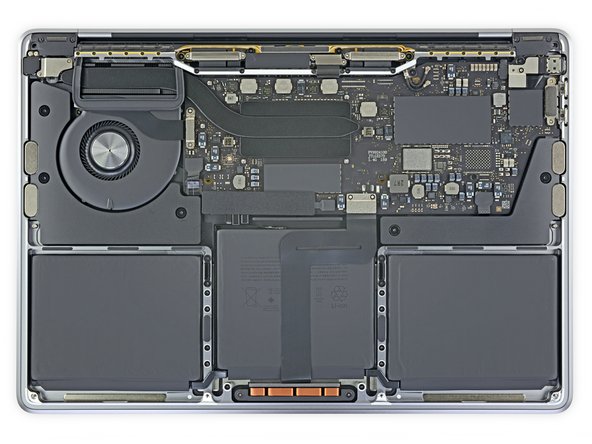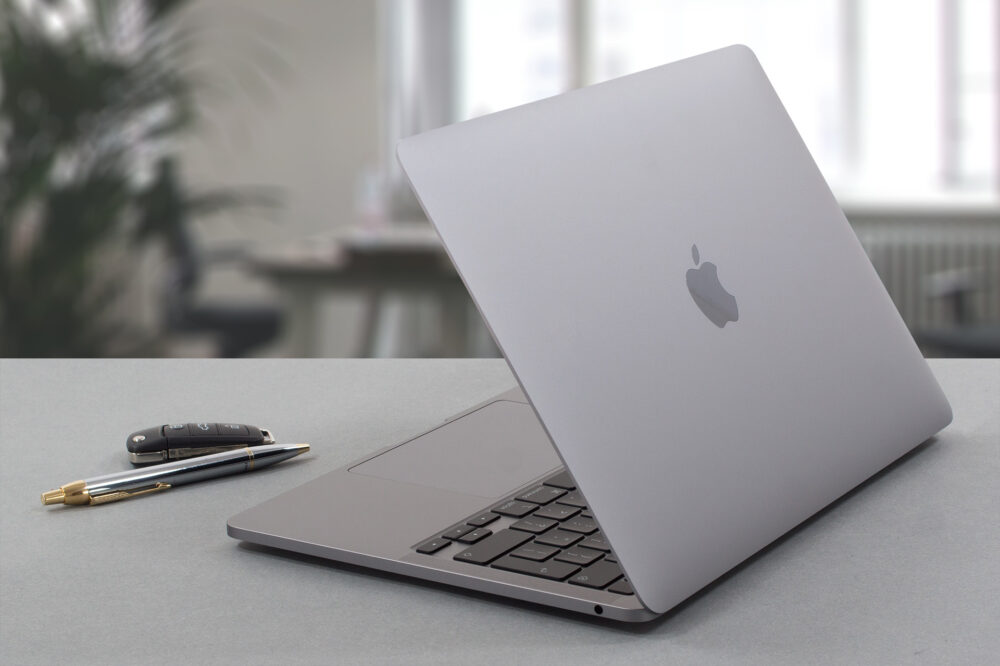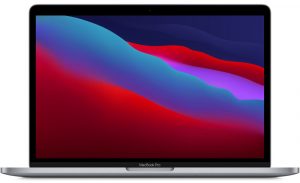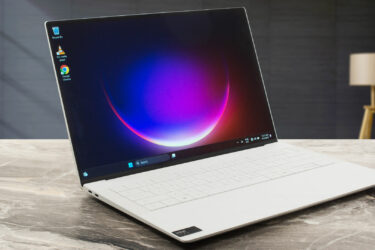Apple MacBook Pro 13 (2022) – Top 5 Pros and Cons
 Apple turned a lot of heads with the introduction of the M1 SoC, which really fits the overall ecosystem. The company has always kept much of its production process in-house, and the laptop components were the next step in them being independent of AMD, Intel, and NVIDIA.
Apple turned a lot of heads with the introduction of the M1 SoC, which really fits the overall ecosystem. The company has always kept much of its production process in-house, and the laptop components were the next step in them being independent of AMD, Intel, and NVIDIA.
Nearly, two years later, the M1 family has expanded to feature the M1 Pro, Max, and Ultra, along with a brand new chip, the M2, which isn’t on the level of the latter three, but offer a large performance improvement over the M1, both in computational and graphics performance. And of course, the M2 needs a laptop to power, so we get the 2022 MacBook Pro 13, which retains the same design as the 2020 laptop, with the only upgrade being the SoC.
Today we present you with LaptopMedia’s top 5 picks about the Apple MacBook Pro 13 (2022).
Apple MacBook Pro 13 (2022): Full Specs / In-depth Review
3 reasons to BUY the Apple MacBook Pro 13 (2022)
1. Build quality
As the laptop reuses the same chassis as the 2020 device. Even with a so-called “outdated” design, this is still one of the most durable devices to have entered our office. With sharp edges, rounded corners, and a glossy Apple logo on the back, it is one of the more minimal-looking laptops. Despite its 13.3-inch body, the laptop has a heft to it, resulting in a weight of 1.40 kg and a profile of 15.6 mm.
2. Battery life
MacBooks are traditionally champs when it comes to battery life, and the MacBook Pro 13 2022 is no different. In fact, it manages to surpass its predecessor, lasting for 28 hours and 20 minutes of Web browsing, or 19 hours and 40 minutes of video playback. Now, we conduct the battery tests with the screen brightness adjusted to 120 nits, and all other programs turned off except for the one we are testing the notebook with. Apple clearly outdid itself with the efficiency of this machine.
In order to simulate real-life conditions, we used our own script for automatic web browsing through over 70 websites.

For every test like this, we use the same video in HD.

3. Performance
CPU benchmarks
The Apple M2 brings new efficiency and performance cores, for 8 total cores, along with a more powerful 10-core GPU. This leads to a 12% performance increase in Cinebench 20. Below are other tests comparing the M2-powered device against both other Apple laptops, along with high-end Windows devices.
Results are from the Cinebench R23 CPU test (the higher the score, the better)
| CPU Benchmarks | Cinebench R23 |
|---|---|
| Apple MacBook Pro 13 (2022, M2) | 8739 |
| Apple MacBook Pro 14 M1 Pro (8C/14C) | 9564 |
| Dell XPS 15 9510 | 11315 |
| Lenovo IdeaPad 5 Pro (14″) | 9905 |
| ASUS VivoBook Pro 14X OLED (M7400) | 12608 |
| CPU Benchmarks | single/multi Geekbench 5 |
|---|---|
| Apple MacBook Pro 13 (2022, M2) | 1933/8985 |
| Apple MacBook Pro 14 M1 Pro (8C/14C) | 1764/9955 |
| Apple MacBook Air M1 | 1732/7574 |
| Apple MacBook Pro 13 M1 | 1727/7564 |
| Apple iPad Pro 11 2020 | 1118/4636 |
GPU benchmarks
Compared to the M1 Pro and other discrete laptop graphics, the M2 is outgunned, however, it still yields 35% more GPU performance than the regular M1.
| 3DMark Wildlife Extreme | |
|---|---|
| Apple MacBook Pro 13 (2022, M2) | 6840 |
| Apple MacBook Pro 14 M1 Pro (8C/14C) | 9142 |
| Dell XPS 15 9510 [RTX 3050 Ti (45W)] | 8633 |
| MSI Sword 15 [RTX 3050 Ti (60W)] | 10618 |
| GPU Benchmarks | GFXBench Manhattan 3.0 (1080p offscreen) | GFXBench Manhattan 3.1 (1080p offscreen) | GFXBench Aztec Ruins OpenGL (1080p offscreen) | GeekBench 5 Compute OpenCL | GeekBench 5 Compute Metal |
|---|---|---|---|---|---|
| Apple MacBook Pro 13 (2022, M2) | 552 fps | 370 fps | 296 fps | 35262 | 38692 |
| Apple MacBook Pro 14 M1 Pro (8C/14C) | 818 fps | 496 fps | 394 fps | 35262 | 38692 |
| Apple MacBook Air M1 | 404 fps | 273 fps | 214 fps | – | – |
| Apple MacBook Pro 13 M1 | 407 fps | 274 fps | 215 fps | – | – |
2 reasons NOT to buy the Apple MacBook Pro 13 (2022)
1. I/O
The I/O should take a walk of shame, with only two Thunderbolt 4 ports and a 3.5 mm audio jack.
2. Upgradeability
Being a MacBook, everything is soldered to the motherboard and integrated into the SoC, thanks to the Unified Memory Architecture which increases bandwidth and limits the travel distance and travel time for the signal and data to flow from the memory to the chip.












